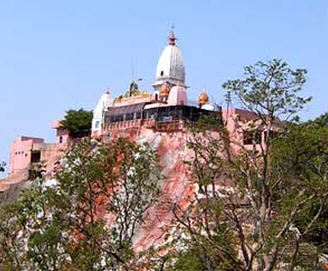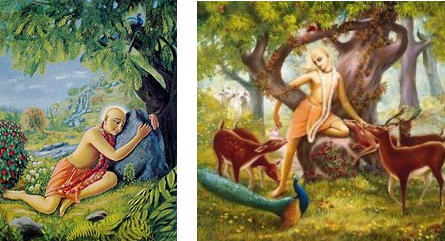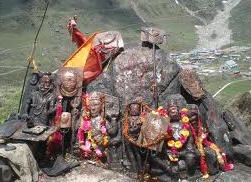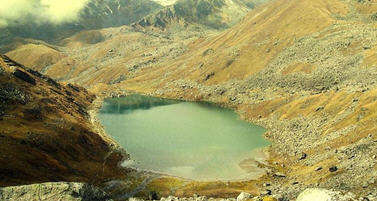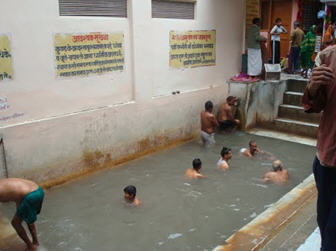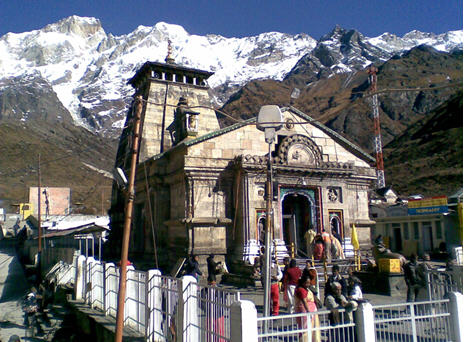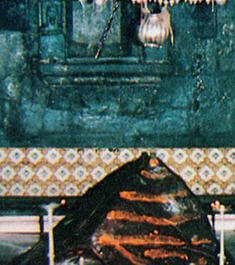Haridwar had many other names like Haradwar,Gangadwar and Svarga dvar. Haradwar indicates that it is the gate from where one can go to Shiva’s places. Haridwar indicates the gate from where one goes to Lord Vishnu’s abode i.e., Badrinath. The name Gangadwar indicates that it is the gate from where one reaches Gomukh or Gangotri. The name Svargadvar indicates that it is the gate where the Pandavas left for Svargaloka and then to Vaikuntha loka.
Haridwar is on the west bank of the Ganges, at the foot of the Himalaya Mountains. This is one of the seven main holy cities in India. Haridwar is about 225km northeast of Delhi.
Significance
It is also called Mayapuri Kshetra in the puranas . It is also called Kapilasthan, because it is said Kapiladeva performed penance here.
This is where Vidura was instructed by Maitreya.
The great sacrifice of Daksha Prajapati took place near here, where Sati burned herself alive.
Nearby at Sapta Sarovara, the Ganges splits into seven streams to please the seven Rishis doing austerities there.
The river is fed icy melting glaciers and snow peaks. A barrage just north of Haridwar splits the Ganges. The water that flows next to the city of Haridwar is actually a fast-moving, big canal. The main natural rivulet of the Ganges, called Neel Dhara, flows about a half-km east of the city.
Kumbha Mela
Haridwar is one of the four places where the kumbha mela is held, during which sadhus from all over India come. This takes every 12 years. The other places where Kumbha–mela takes place are Allahabad (Prayag), Nasik, and Ujjain. It is said that some of the nectar from the kumbha carried by Jayanta (the son of Indra) fell at this place. The main bathing place is Har Ki Pauri
Important places
Hari ki Pauri Ghat (Brahma Kund)
This is located at the exact spot where the Ganges leaves the mountains and reaches the plains and is considered a very holy place.
The name Hari-ki-Pauri means “the feet of Hari (Lord Vishnu).” The footprints of Vishnu are imprinted on the wall underneath the water at this ghat. You need to ask the priest to be able to touch it.
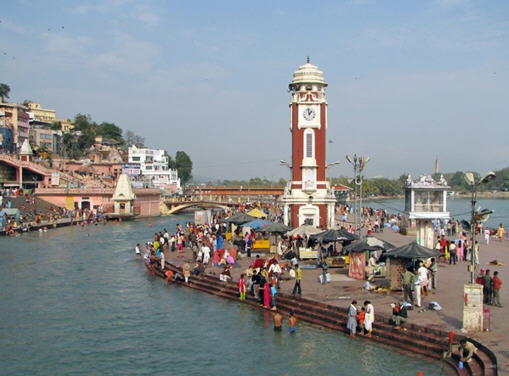
This Ghat is also called Brahma Kund because it is said that Raja Shveta performed austerities here and received blessings from Brahma. Kumbha-mela is held here where the nectar fell. There are temples here dedicated to the goddess Ganga and Haricharan.
Every night at about 6 pm there is an arati to the sacred Ganges.
Before starting their “Char Dham yatra in himalayas,” pilgrims are supposed to come and bathe at this ghat. One hundred thousand people can bathe here at one time. There are chains and rails that enable people to bathe safely, as the Ganges flows very swiftly at this spot.
Auspicious Bathing Dates
Hundreds of thousands of people come to bathe at this ghat on the first day of Vaisakha in April/May, when the Hindu solar year begins. On Ganga-dasera, at the beginning of the rainy season, the Ganges is said to have come down from the heavens. Other important bathing days are on Purnimas (full moon days, especially Kartika Purnima), Ekadasis, Amavasyas (new moon days), Sankrantis (when the sun enters the next zodiac sign), and solar and lunar eclipses.
The ashes of the dead are supposed to be cast into the Ganges at the southern part of the ghat.
Other Ghats
South of Hari-ki-Pauri, there is an interesting area to walk which is lined with bathing ghats.
Kushavarta Ghat,
about half a km south of Hari-ki-Pauri is said to be the place where Dattatreya did penance by standing on one foot for a thousand years. Lord Vishnu is said to have bathed at Vishnu Ghat.
Mansa Devi Temple
This temple is situated on Vilwa Parvat, the hill above the city. Mansa Devi is a form of Shakti Durga. It is said to be the place where the heart and navel of goddess Sati had fallen.
There is a cable car that goes to the top of the hill, which you board close to Ratan Cinema, just off the main road. From the top of the hill you get a bird’s eye view of Haridwar, the Ganga valley, and the Himalayan peaks, Open 8 am to noon and 2 to 5 pm. It takes about a half-hour to walk up the hill.
